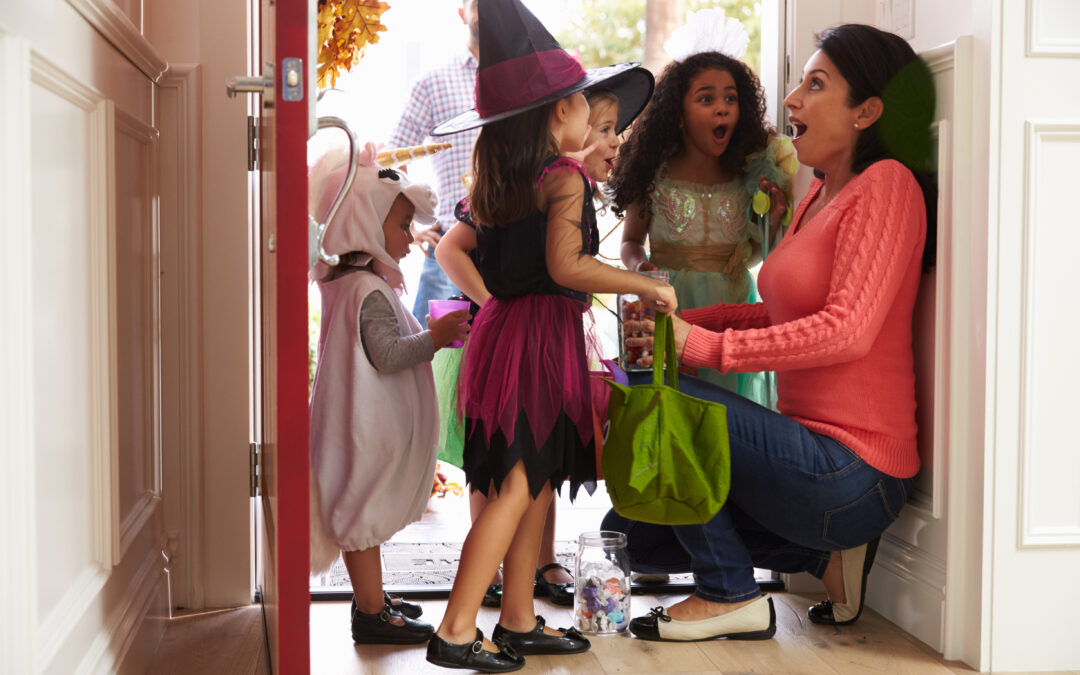The rustle of candy wrappers and the excited chatter about costumes mark the arrival of Halloween. Yet for many children, this holiday brings a mix of emotions. A child might freeze at the sight of a scary decoration, burst into tears over an itchy costume, or feel overwhelmed by the noise and excitement of trick-or-treating crowds.
As parents, we may feel tempted to minimize these fears or push through the resistance, but there’s another way forward. Through playfulness and understanding, we can help our children navigate Halloween’s challenges while strengthening our connection with them. Here are some suggestions for transforming common Halloween hurdles into opportunities for growth.
Honoring Their Fear
Halloween’s spooky elements can trigger fear in children, and how we respond to these fears shapes their experience. When your child shows signs of fear or anxiety, resist the urge to dismiss their feelings with phrases like “Don’t worry,” “There’s nothing to be afraid of,” or “See, everyone else is going up to the door. Go ahead!” These well-meaning reassurances can lead children to internalize the belief that something is wrong with them for feeling the way they do.
Instead, try acknowledging their experience with something like:
- “I see you’re not ready to go into the party or up to the front door. I’ll wait with you until you are.”
- “Everyone worries. You’re not alone with your worries. I’m here.”
- “There’s something about costumes that doesn’t feel good to you. I believe you.”
- “It makes sense that you’re afraid right now. Everyone gets scared sometimes.”
This approach helps children learn to trust their instincts and understand that all feelings are valid, even the scary ones.
The Costume Conundrum
Is your little one refusing to wear their costume? Before frustration sets in, remember, resistance often signals something deeper. Your child might be:
- Anxious about upcoming festivities
- Holding onto scary memories from past Halloweens
- Simply having a moment of asserting independence
If that’s the case, try this playful approach: When your child says no to their costume, make it into a game. “Oh, perfect!” you might say with exaggerated enthusiasm, “I’ll wear it instead!” Then proceed to:
– Put your arm through the leg hole
– Wear the helmet backwards
– Stumble around like a confused superhero
– Pretend you can’t quite catch them
Remember, if the costume battle continues, ask yourself—Is dressing up really essential? Sometimes going as yourselves is the best costume choice.
Navigating Party Nerves
Big Halloween gatherings can overwhelm even the most social butterflies. When your child seems hesitant about joining the festivities, try the “Peek and Retreat” game:
- Hold your child close and peek at the party together.
- Whisper playfully, “Should we run away?”
- Run away together and then run back for another peek when they’re ready.
- Rinse and repeat to see if this loosens the tension.
This game can be effective because you’re following your child’s lead; they can observe the scene from a safe distance until they’re ready to go in, and the element of play reduces pressure and helps ease anxiety.
When your child seems ready to join in, offer gentle support: “Shall we go say hi to your friend Alex together?” If they’re not ready to join the crowd, you might say, “I see you’re not ready yet. I’ll be here with you until you are.”
Be the Candy Thief!
Halloween excitement + sugar + tired kids = potential meltdowns. When siblings start squabbling over candy, transform the tension with play.
When you notice candy conflicts brewing, announce dramatically, “Actually, I want ALL the candy!” Gather up the contested sweets and make a playful escape. This can shift children from competition to cooperation as you ease the situation with laughter. In addition, you become the playful “opponent” they can unite against.
Flexibility is key. There’s no one “right” way to do Halloween. By following your child’s lead while keeping things light-hearted, you create an environment where they feel safe to express their feelings. These moments of understanding and playful connection build trust that lasts long after the candy is gone.








